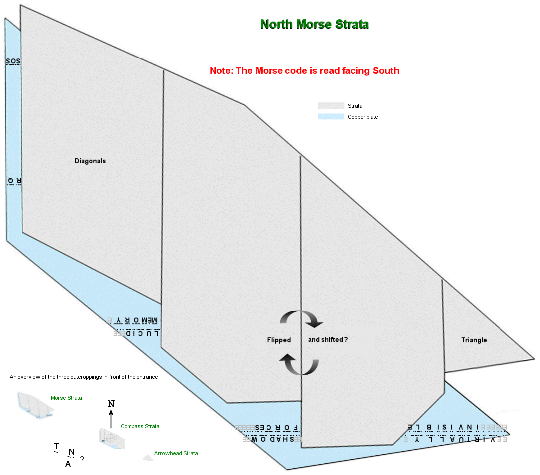➤A few days ago Jim Sanborn made an announcement - he wrote an open letter to the community, which is shown below and be accessed here [2]:
Another open letter to the kryptos community:
Todays K4 clues:
- Two events had a significant role to play while I was writing the plain text of Kryptos in 1988.The first was my second trip to Egypt in late 1986, and the second was the fall of the Berlin Wall
- The Berlin Clock in K4 is the World Clock in Berlin that was the gathering place for the crowds that brought down the Berlin wall.
- The Codes of Kryptos from the morse code at the beginning through K5 are about delivering a message.
- I have hinted at the existence of something following K4 dozens of times in interviews over the decades. The Kryptos K2 plain text even reads "its buried out there somewhere"
But you also must understand that during the construction of Kryptos my activities were carefully monitored, as were the activities of my employees. Each of us had an escort (my escort badge is in this auction) who was with us, always, yes even during bathroom breaks. In addition, each evening our sites were electronically scanned for anything we left behind.
We are doingserious heavy construction, excavating, moving tons of earth and stone and pouring Concrete. If I were to leave something there on site it would have to be semi-ephemeral, undetectable and carefully hidden.
Proof-of-Concept piece: In 1988 When I was designing Kryptos and after I decided to use code, I had to know if and how long it would take to cut 2000 letters through heavy copper plate, and would it distort the cut letters when it was rolled into a curve. So, I made the heavy copper "proof-of-Concept" piece that is in the auction just to be sure I could do it.
Multiple Versions: In a similar way whenI wrote the plain text sections K1-K4 l had to be sure that the words and the coded letters would fit on the curved copper panel, iustified margin to margin top to bottom, so I made multiple versions of the text, with different lengths and coding. Onlya couple survive today, and both are in the auction.
Kryptos Endings: In 1988, Just like in the cinema industry, I also made several "endings" to Kryptos and had to decide which one to choose. I assumed that the Morse code and K1-K3 would be decrypted very quickly a year at the outside, and I thought K4 would fall with new Technology in ten years. But did I really want it to end that soon?
Of course not! so I made multiple "alternate" scenarios. Only one of them has survived and is in the auction and is now referred to as K5.
Why am I talking about K1-5 now, it's because the winner of this auction, the new Krypos Keeper, has to have this information to maintain Krvptos's authenticity and have the right and potential license, to release K5, announce new clues and verify decrypts from where ever the Keeper is located.
K5 Hints: As I just said, I fully expected that K4 would be cracked many years ago and that an "alternate scenario" would have been announced at that time. But because of intervening decades and the imminent transfer of Kryptos at auction to a new keeper, and other recent events I must roughly define what K5 is:
K5 is 97 characters long, has a similar coding system to K4. has the words BERLINCLOCK in the same position as in K4, and at the discretion of the new owner other K5 Clues may be announced after its released.
When, and if, K5 is released it will also have more global reach and most importantly since the K5 code is not physically on the serpentine screen at CIA a copy of it will however be accessible to the public and be located in a public space.
About Kryptos Followers: To clear up some confusion in the press I have found that in 30 years of responding to thousands of potential decryptors that only one person responded in a hostile manner, that's kind of amazing really because I was delivering unwelcome news to many people who had worked sometimes for years on Kryptos. Thousands of code breakers from around the world have been very polite, deferential and engaging.
The Avatar: In the last few months l have been working with a serious innovator in the Al voice industry on an automatic system for responding to Kryptos code enguiries. This sophisticated system developed by lgor Jablokov at Pryon Corporation will eliminate the burden of manually verifying K4 and K5 decryptions. This system can be transferred to the new Kryptos Keeper after the auction if they would like to use it.
That's it, all the best, Jim Sanborn






